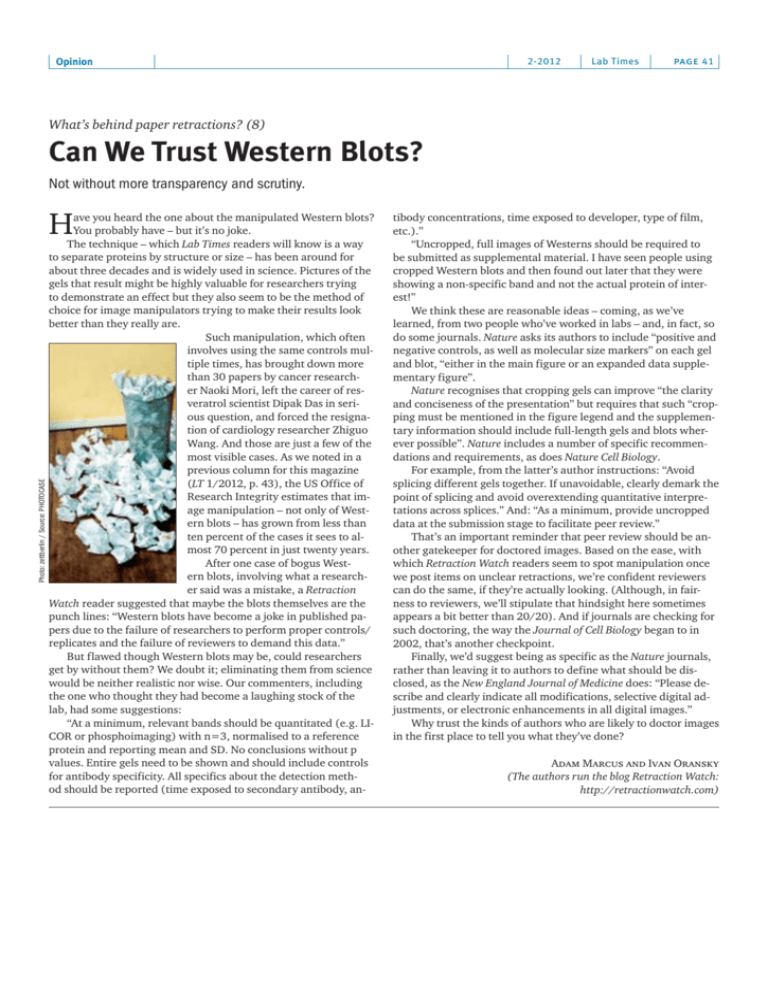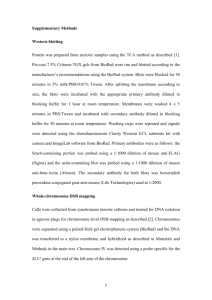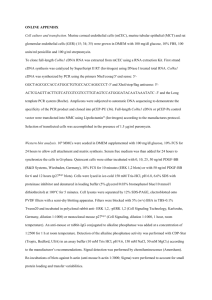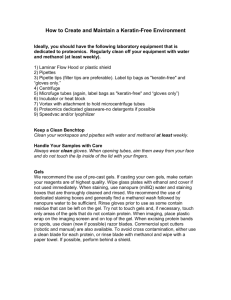Can We Trust Western Blots?
advertisement

Opinion 2-2012 Lab Times page 41 What’s behind paper retractions? (8) Can We Trust Western Blots? Not without more transparency and scrutiny. Photo: zettberlin / Source: PHOTOCASE H ave you heard the one about the manipulated Western blots? You probably have – but it’s no joke. The technique – which Lab Times readers will know is a way to separate proteins by structure or size – has been around for about three decades and is widely used in science. Pictures of the gels that result might be highly valuable for researchers trying to demonstrate an effect but they also seem to be the method of choice for image manipulators trying to make their results look better than they really are. Such manipulation, which often involves using the same controls multiple times, has brought down more than 30 papers by cancer researcher Naoki Mori, left the career of resveratrol scientist Dipak Das in serious question, and forced the resignation of cardiology researcher Zhiguo Wang. And those are just a few of the most visible cases. As we noted in a previous column for this magazine (LT 1/2012, p. 43), the US Office of Research Integrity estimates that image manipulation – not only of Western blots – has grown from less than ten percent of the cases it sees to almost 70 percent in just twenty years. After one case of bogus Western blots, involving what a researcher said was a mistake, a Retraction Watch reader suggested that maybe the blots themselves are the punch lines: “Western blots have become a joke in published papers due to the failure of researchers to perform proper controls/ replicates and the failure of reviewers to demand this data.” But flawed though Western blots may be, could researchers get by without them? We doubt it; eliminating them from science would be neither realistic nor wise. Our commenters, including the one who thought they had become a laughing stock of the lab, had some suggestions: “At a minimum, relevant bands should be quantitated (e.g. LICOR or phosphoimaging) with n=3, normalised to a reference protein and reporting mean and SD. No conclusions without p values. Entire gels need to be shown and should include controls for antibody specificity. All specifics about the detection method should be reported (time exposed to secondary antibody, an- tibody concentrations, time exposed to developer, type of film, etc.).” “Uncropped, full images of Westerns should be required to be submitted as supplemental material. I have seen people using cropped Western blots and then found out later that they were showing a non-specific band and not the actual protein of interest!” We think these are reasonable ideas – coming, as we’ve learned, from two people who’ve worked in labs – and, in fact, so do some journals. Nature asks its authors to include “positive and negative controls, as well as molecular size markers” on each gel and blot, “either in the main figure or an expanded data supplementary figure”. Nature recognises that cropping gels can improve “the clarity and conciseness of the presentation” but requires that such “cropping must be mentioned in the figure legend and the supplementary information should include full-length gels and blots wherever possible”. Nature includes a number of specific recommendations and requirements, as does Nature Cell Biology. For example, from the latter’s author instructions: “Avoid splicing different gels together. If unavoidable, clearly demark the point of splicing and avoid overextending quantitative interpretations across splices.” And: “As a minimum, provide uncropped data at the submission stage to facilitate peer review.” That’s an important reminder that peer review should be another gatekeeper for doctored images. Based on the ease, with which Retraction Watch readers seem to spot manipulation once we post items on unclear retractions, we’re confident reviewers can do the same, if they’re actually looking. (Although, in fairness to reviewers, we’ll stipulate that hindsight here sometimes appears a bit better than 20/20). And if journals are checking for such doctoring, the way the Journal of Cell Biology began to in 2002, that’s another checkpoint. Finally, we’d suggest being as specific as the Nature journals, rather than leaving it to authors to define what should be disclosed, as the New England Journal of Medicine does: “Please describe and clearly indicate all modifications, selective digital adjustments, or electronic enhancements in all digital images.” Why trust the kinds of authors who are likely to doctor images in the first place to tell you what they’ve done? Adam Marcus and Ivan Oransky (The authors run the blog Retraction Watch: http://retractionwatch.com)




